When we bought the property it hadn’t been occupied or maintained for thirty years. The chimneys, without fires, had simply let water into the property, so it wasn’t just a question of cleaning them out and lighting a fire… The walls, being created of field stones and mud, were wet through.
In the living room, we stripped out the old cast iron fireplace, which was so rusted it was simply not salvageable. We removed thirty years worth of jackdaw’s nests and some mummified rodent remains. We bricked up the fireplace, and backfilled the space. We knocked out some of the stones above to enable access to line the chimney.
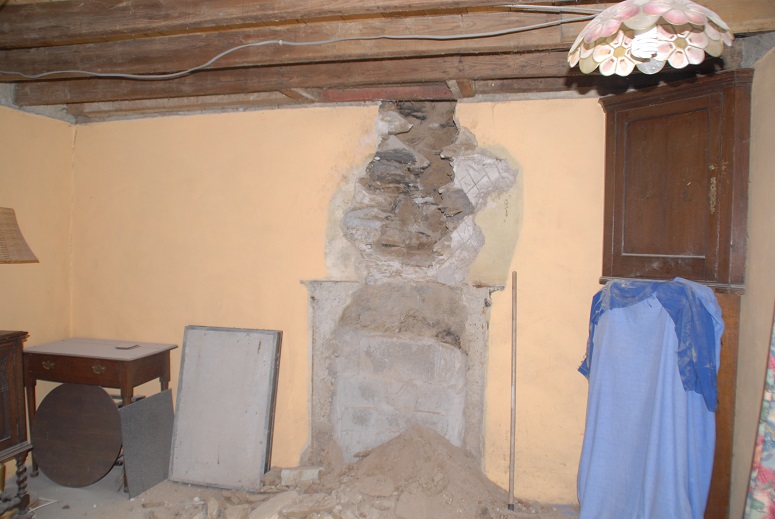
In the bedroom above we removed another rotted fireplace, and created more chimney access points through into the attic space.
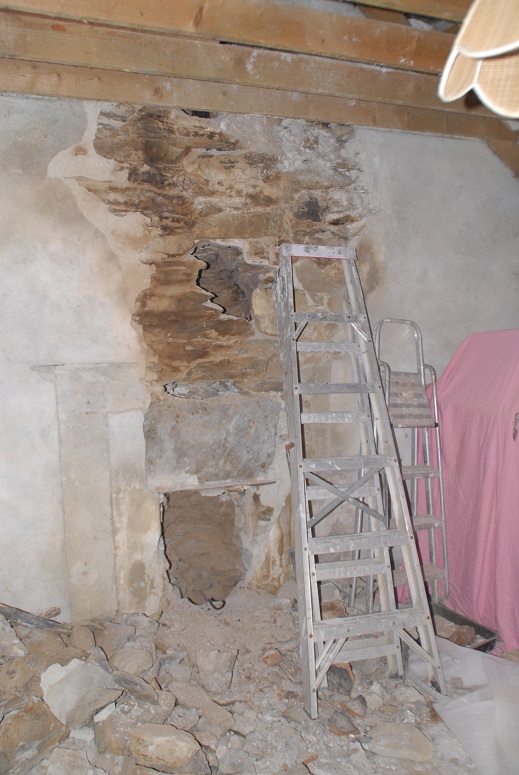
The ceramic liners were then juggled through the holes and fitted together. As we repaired the stonework from the floor up, we backfilled the space with a lime mortar mix. This was tipped in dry, and would gradually soak up the available water, and set hard.
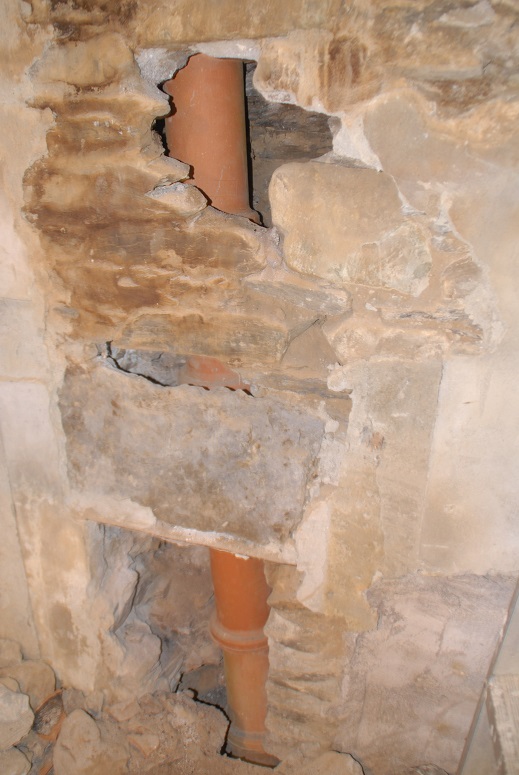
Outside, we created an ‘ash box’.

This is just below the point at which the stove pipe enters the chimney inside the room, enabling the ash to fall below the level of the pipe, and be removed from the outside. The external cavity is eventually made good and fitted with a metal access cover.
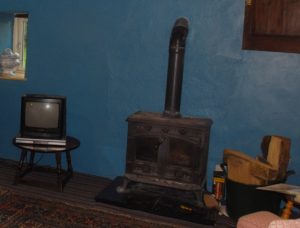
A similar process then began at the other end of the house, which was in a far worse condition. It was not just damp from seepage down the chimney. Having borne the brunt of the Irish weather, water had penetrated through the walls, the roof, and gashes in the external plaster. It was a wet, seeping hive of insect and worm activity.
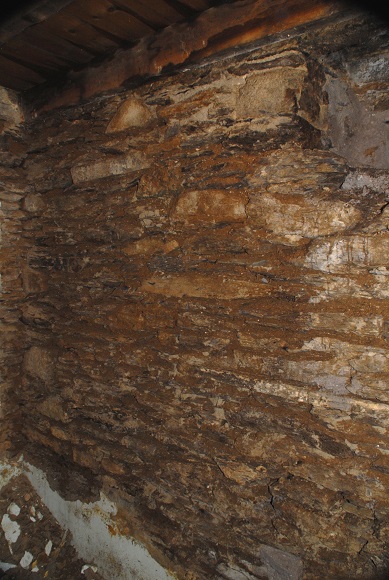
So, we moved our cupboards four feet into the room, and began to work behind them, stripping the plaster, fitting the ceramic chimney liners, and eventually repairing the wall.

This was the point at which we discovered the chimney itself was not sound. So off it came…
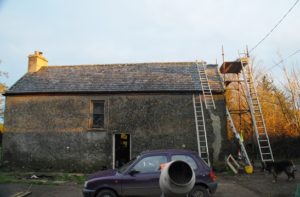
The chimney openings within were sodden.
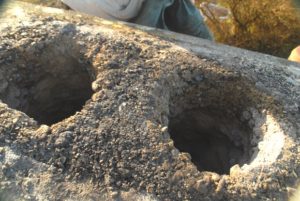
The chimney leading to the bedroom is back-filled and blocked off, the one leading to the kitchen is ceramic-lined.
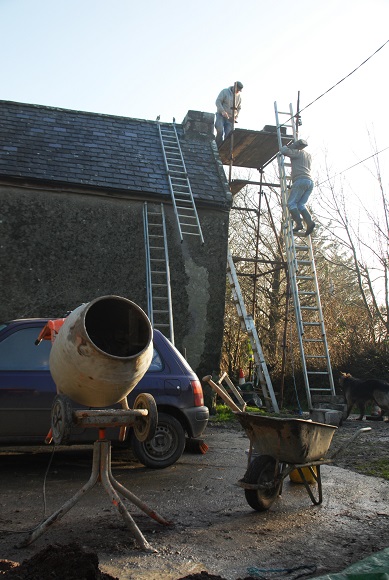
A new chimney block is built, rendered, and finally capped with concrete and fitted with new pots.
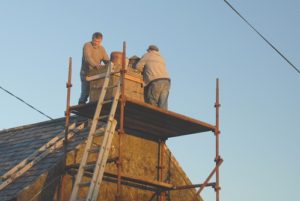
The concrete is covered for a month or so to allow the concrete to dry out. If we had lit the Rayburn too soon, the new render would have cracked.

The Rayburn was finally able to begin the drying process. As you can see, nothing happened in sequence. At the same time, we were replacing windows, doors, fitting insulation, working on the garden, and building the extension…

It was fun seeing our yard and field from the scaffolding. Meanwhile, in our spare time we had erected the polytunnel, built a woodshed, a sheep shed behind the bus, and two pigsties to the left of the old Land Rover.
